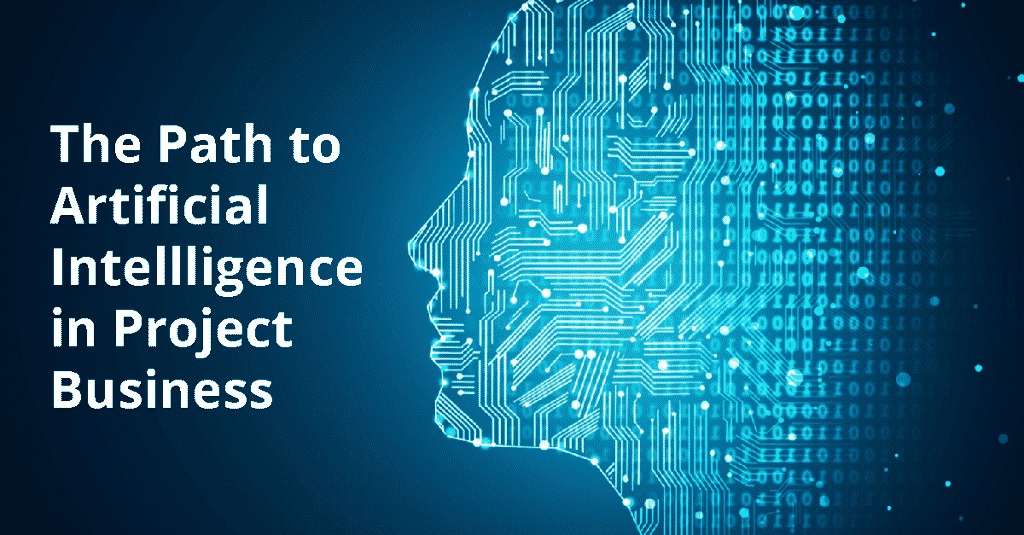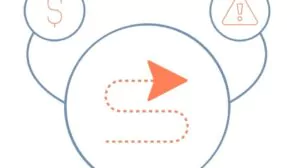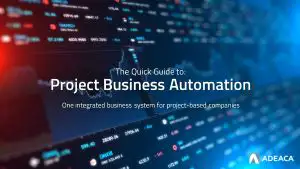This article is part of a series of blogs on Artificial Intelligence in Project Business. See the rest of the articles in the series at the end of this blog.
While artificial intelligence continues to gain traction across many industries, it remains almost non-existent in Project Businesses (i.e. project-based companies). For now, attempts at AI in Project Business have focused on narrow tasks and have lacked a broader approach to provide a predictive model of project intelligence. One that can determine if a project will finish on time and on budget, and to what degree will it miss or beat the plan.
When your primary business depends on the successful delivery of projects to your customers, it is best to take out as much risk as possible and be able forecast potential issues earlier in order take mitigation actions faster.
However, it is not that simple for Project Businesses, that do not have their data structured in a way that AI can use. That is not to say they are lacking in data. Oftentimes, there are massive amounts of data involved in projects. However, this data is not stored and managed in a standardized way. AI is only as good as the data you put into it, so it’s best to avoid a “garbage in, garbage out” scenario.
Disparate Systems and Standards
Most Project Businesses utilize a host of disparate applications to manage their core business processes, which revolve around projects. These tools include project management, project accounting, budgeting/costing, time and expense reporting, resource management, asset management, and lots of spreadsheets. As a result, processes and data are spread across this fragmented landscape of different applications and tools with little to no integration, except through the time-consuming manual consolidation with spreadsheets.
Unstructured Data
This disparate environment of multiple data silos means Project Businesses are not operating on a single source of truth, but rather independent databases that do not communicate with each other through an automated channel. When there’s a large amount of unstructured data, it’s very difficult to integrate and organize this data to produce meaningful information. As a result, there is no reliable data that an AI can exploit.
Lack of Intelligence
In addition to simply having many different forms of data in different tools, these tools are extremely flexible and make it difficult to exercise any process governance over them. Five people running the “same process” end up doing it five different ways. Because of this flexibility, it is impossible to use the output from these five people to measure that process. You also cannot trust the data derived from it.
Therefore, the data ends up not only fragmented and disorganized, it is also untrustworthy.
To say it another way, there is a complete lack of visibility into the status of projects and little control over the processes being performed. When there’s little reliable data, more often than not, projects finish over budget or behind schedule.
The bottom line is it is impossible for AI to help in this data landscape.
What is the AI Solution for Projects?
To make meaningful predictions about projects, you need to capture two things:
Key Project Metrics: Certain project KPIs should be recorded consistently, not only for running your business but also to feed into an AI. These include metrics like material constraints, resource conflicts, issue logs, risk ratings, estimate-at-completion margin, etc. These metrics act as a baseline of data for an AI agent to make meaningful predictions.
Time-Phased and Real-Time Data: These metrics should not be gathered and computed on a monthly or quarterly basis for AI to be effective. If it takes you weeks to consolidate and translate this data into an AI readable format, you might as well not waste your time, because by the time you get the prediction, it’s out of date. More than likely, the status of the project has changed materially by then.
KPIs need to be available in real time, and historical data should be updated and stored at regular intervals, at least daily and weekly. While some specific calculations that are part of the month-end process (i.e. closing the books) may be done less frequently, ideally these metrics are computed automatically and updated in real time.
Time-phased data is critical for the AI to conduct trend analysis and make meaningful and accurate predictions about the future of the project.
Download the AI for Project Business Whitepaper and learn how to set your company up for AI success.
Looking Ahead, Predicting the Future
While AI in Project Business may seem impossible, if the right approach is taken, AI is achievable for these companies. However, this approach demands massive amounts of structured data stored in a time-phased manner to learn and make predictions. Project Businesses need to adopt an approach that lets them create this organized data structure to reap the benefits of AI.
Our next blog will discuss the Project Business Automation approach to establishing the foundation for AI.
AI in Project Management series of articles:











